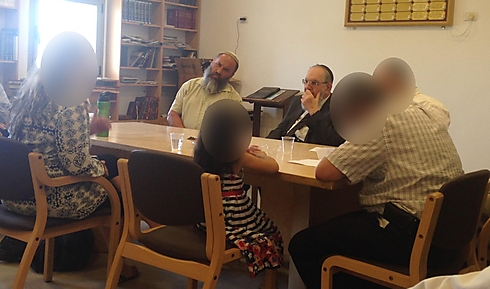


A tolerant and traditional Jewish approach toward modernity
Op-ed: The new collaborative conversion platform is an authentic expression of something Israelis have been seeking for decades. The Jewish people and Jewish state must not run away from the challenges of modernity, but rather embrace them.
For almost three years, I have been arguing that the conversion crisis could only be solved by action, not words, and for the past year the ITIM organization has been forging a coalition that would make action a reality.
Over the past year, I have hosted and participated in dozens of meetings trying to determine how a private bet din for conversion could work. Ultimately, the network of rabbis, organizations and activists was created with a singular vision in mind: To resolve the challenges of conversion for the Jewish people.
Until the creation of "Giyur Kehalacha," ITIM had worked on two fronts, through litigation and legislation. In the past year we have been in the Supreme Court three times to guarantee the rights of converts. The last time we were in court was in late June, attempting to convince the court that private conversions should be recognized for civil purposes in Israel. And over the past two years, the ITIM staff worked assiduously alongside former Knesset Member Elazar Stern to pass the conversion bill.
But both litigation and legislation are limited in scope. In the end the litigation wasn't a game changer and the legislation was repealed. That left only one option: Starting to convert.

What makes "Giyur Kehalacha" different? At the risk of oversimplification , let me note three issues:
1. The halachic approach: Guided by rabbis of The mainstream of the tolerant religious Zionist community, Giyur Kehalacha meets potential candidates where they are. The process is completely transparent, candidates know where they can turn, know what's expected of them, and there is an expectation that candidates will be completely truthful. Mothers who are not Jewish but who want to bring their children up in Israel as Jews are not forced to convert with their children and whole encouraged, children are not required to go to religious schools. This makes the potential pool of converts much larger than before.
2. The rabbis performing conversions are not political appointees (and as of now, they are not salaried). These rabbis are engaged in conversion out of a sense of loyalty to the future of the Jewish people in Israel. Now, to be sure, there are some serving judges in the national system who also are committed to these values, but they are in many instances subject to the decisions of the centralized rabbis. Giyur Kehalacha embodies the precept of the great code of Jewish law, the Shulchan Aruch, adopting the principle that conversion can only be done "based on the impressions of the individual judge."
3. Giyur Kehalacha has a broad view and a long view of Jewish tradition. It understands that given the unique and miraculous circumstances that have brought hundreds of thousands of Jews to Israel who are not halachically Jewish, something must be done. The conversion crisis is less crisis and more opportunity for Halacha to show its beauty and dynamism.
To be sure, the last week has highlighted how many detractors these approaches have. But whatever one's approach, one cannot dismiss that actions speak louder than words.
For now we plan to enable those seeking conversion to realize their dreams. And we will continue to fight for the full rights of these converts, in order to make sure that the Jewish people and the Jewish state don't run away from the challenges of modernity, but rather embrace them, and respond in a way that brings dignity to our state and leaves politics for others.
Rabbi Seth Farber is the director of ITIM – The Right to Live Jewish and one of the founders of "Giyur Kehalacha."















